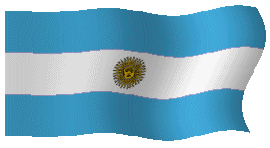
B"H
Jewish  Tours
Tours
 Buenos Aires, Argentina
Buenos Aires, Argentina
ARGENTINA, South American Federal Republic, general population (2004) 39,150,000; Jewish population 190,000.
Jewish agricultural settlement in Argentina began in 1888 under the auspices of the *Alliance Israélite Universelle . Of the 136 families who arrived on the ss Weser in 1889, about 40 acquired land from a landowner, Pedro Palacios, and set up the Moisesville colony. The settlers suffered from hunger and disease during the first months of their settlement, due to lack of equipment and financial means. Wilhelm Loewenthal, a Jewish physician and naturalist, was invited by the Argentine government to carry out a mission of inquiry in the latter half of 1889. On his way to Argentina, he was asked by Jewish leaders in Berlin and Paris, who had helped the immigrants on the Weser, to report on the settlers' condition. During his stay in Argentina, Loewenthal attempted to improve relations between Palacios and the settlers. He also set forth to the Alliance Israélite Universelle a long-range program for Jewish agricultural settlement in Argentina for the absorption of about 5,000 persons a year. Though the Alliance rejected his proposal, the idea was forwarded to Baron Maurice de *Hirsch , who decided to adopt the plan as he had completely abandoned his previous plans to improve the lot of Russian Jewry by establishing a network of schools in Russia.
In November 1890, Loewenthal was sent by Baron de Hirsch to Argentina at the head of an exploratory mission, and on April 28, 1891, the Baron appointed him director of his settlement project. Soon afterward, Baron de Hirsch decided that his plan would be the cornerstone of a comprehensive territorial project, which, within a relatively short period, would be a solution to the worsening condition of Russian Jewry. As a result, the first immigrants were sent to Argentina in July 1891. Negotiations were held with private individuals and with the Argentinean government for concessions and the acquisition of up to 3,750,000 hectares of land in Chaco. Negotiations were also held with the Russian government to allow the emigration of Jews and secure a permit to establish emigration agencies. The Russian government agreed to the request on May 20, 1892, assuming that in the ensuing 25 years 3,250,000 Jews would leave Russia. However, this grandiose scheme did not materialize. The Argentinean parliament did not approve the sale of large tracts of land, and Baron de Hirsch was persuaded that the climate and soil in the areas under consideration were unsuitable for Jewish colonization. The settlement of the first immigrants was beset by serious administrative and social difficulties, which Baron de Hirsch was unable to overcome even after Loewenthal was removed from his post and replaced by Colonel Albert E.W. Goldsmid. Baron de Hirsch continued to hope that he would find suitable locations and carry out a large and geographically concentrated project. In 1895 he admitted that his plans were unrealistic and tried to change the main objective of his activities from emigration and agricultural settlement to productive support of needy Jews in Europe and the Americas. On April 21, 1896, he died while in the midst of implementing the revised plan, which continued on a minor scale.
Instead of the mass project and the vast and concentrated territories, at the time of the Baron's death the Jewish Colonization Association (ICA) owned a total of only 302,736 hectares in the provinces of Buenos Aires, Entre Ríos, and Santa Fé with a total of 910 families (6,757 persons). Jewish colonization developed primarily in the 20 years after the Baron's death. The land area rose to 586,473 hectares on the eve of World War I, and from then on until ICA ceased its activity, it rose to only 617,468 hectares. The number of persons settled on the land reached 18,900 during this period, a figure only 1,428 short of the peak figure for 1925 (20,382 persons). Also during this period most of the cooperatives were formed in the colonies, and Alberto *Gerchunoff wrote his classic work, Los Gauchos Judíos.
|
Visite nuestro sitio/Visit our home page: |